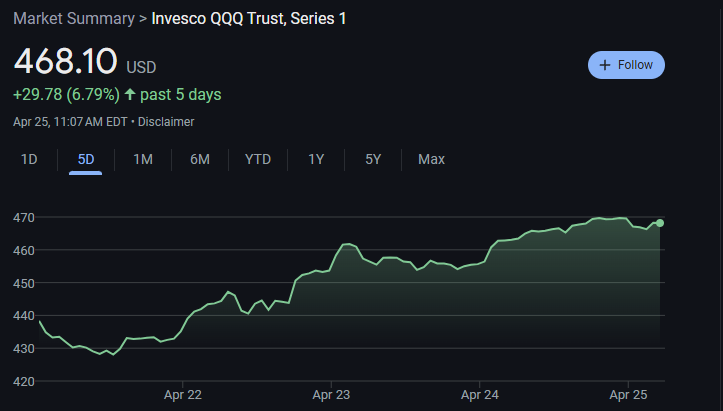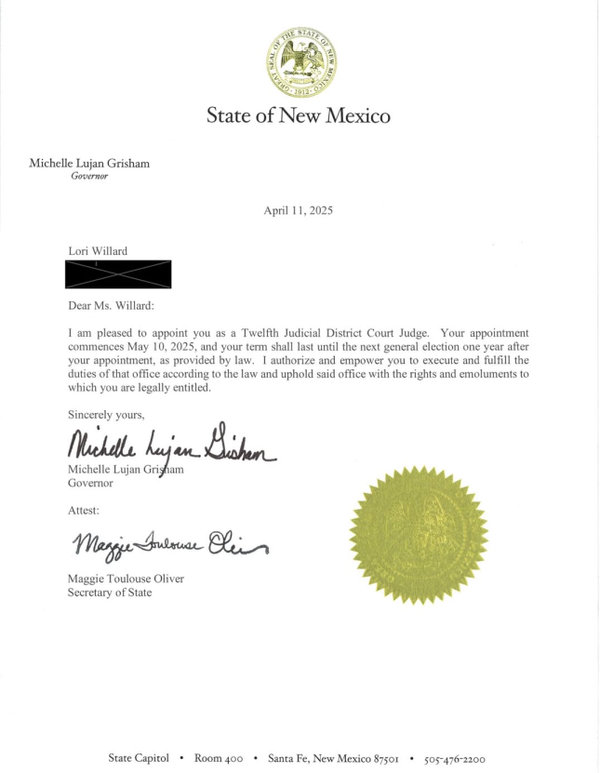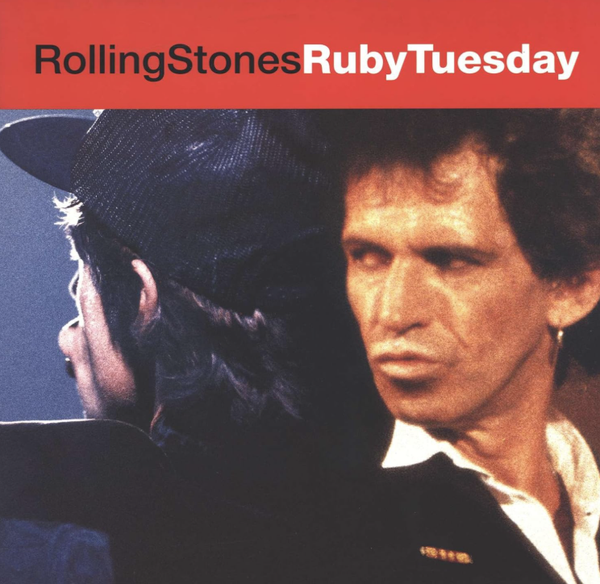The AI Tech Stack
The AI Revolution is here, and just getting started. We are in the first innings of what will be one of the biggest technological shifts in history. Our best example of a technological Revolution of this scale is probably The Internet Revolution that took place in the late 1990s and early 2000s.

The AI Revolution is here, but it is just getting started. We are probably in the first inning of what will be one of the biggest technological shifts in history. Our best example of a technological Revolution of this scale is probably The Internet Revolution that took place in the late 1990s and early 2000s.
When the internet came along, a lot of people could see that it would change the world, but when the internet was in its very early stages (say 1995), it was hard to predict exactly where all of the value from the internet would accrue, and who would be the ultimate winners. Early winners included those who provided the infrastructure to support the internet and PCs, like Cisco, Intel, Sun Microsystems, etc. and also consumer-facing platforms like Yahoo and AOL.
However, we know now that the ultimate winners of the Internet Revolution ended up being companies like Google (GOOG), Amazon (AMNZ), and Meta (META), and two of those companies (GOOG and META) did not even come public until well after the dot com bubble burst.
Many of the dot com darlings that exploded in 1999 and 2000 ended up being total busts (Pets.com, Webvan, etc.), and yet it’s also ironic that the business models of Pets.com and Webvan ended up working out at much later dates.
Chewy (CHWY) essentially does the same thing that Pets.com aspired to do and Instacart (CART), Uber Eats (UBER), and DoorDash (DASH) all make lots of money doing grocery delivery, which was what Webvan did.
The point is that it is very hard to see into the future to see which companies will benefit from a technological revolution as big as the internet or AI. Even if you can see that a certain business model might work (e.g. online pet food or grocery delivery) using this new technology, the timing or the execution might be wrong and you could still go bust.
Thus, what we have created below is what we are calling the AI Tech Stack. In this, we have attempted to identify all of the different layers of technology and businesses that support, utilize, or benefit from AI, from the company mining copper for wires that go in data centers to end products like Tesla’s Optimus Robot.
With this, we are not attempting to predict all of the winners and losers from AI just yet, but we think having this logical framework in place will help us more rapidly and accurately predict winners and losers as real-life trends start to emerge from the primordial AI soup. If we do this correctly, we can maximize our odds of investing in the Revolutionary companies that are attractively valued relative to the future value they will create using or because of AI. Moreover, we will avoid and/or short the companies that are bubbled up with AI hype or whose business models will likely be destroyed by AI.
You’ll see that the AI Tech Stack includes both new and existing technologies/businesses that will benefit from AI.
But just because a certain business might see some incremental benefit from AI does not mean we should go invest in the stocks of those businesses. To be clear, we are not saying that all of the companies listed below are good investments right now. For example, new AI data centers will require a lot more power, so there will be increased demand for electricity and electric utilities will likely benefit.
However, determining the incremental electricity demand, the effect AI will have on pricing, the capital required to build new electric generating capacity, etc. is not easy and it is difficult to say whether or not utility companies will clearly increase their profits because of the AI Revolution. They may well turn out to be great investments for AI, but what we really want to find are those pure-play companies that will benefit from AI to a much greater degree (thus presenting more upside potential) and that are reasonably valued.
As the AI Revolution moves into its next inning, we believe the value created by AI will start to spread out and include many companies that are not obvious current beneficiaries. Therefore, we want to (1) identify all companies that fit anywhere in the AI Tech Stack; (2) identify the way in which AI creates value at each company; (3) if applicable, identify each company’s “edge” when it comes to AI; and (4) quantify the potential value creation from AI over the next 3-5 year timeframe. The AI Tech Stack presented below is only step one in this four-part process that we plan to undertake over coming weeks and months.
Keep in mind that the AI Tech Stack is dynamic. We do not claim to know all of the many applications that will be created using AI nor the precise amount of value that those applications will create. However, as mentioned, we think this will be a useful logical framework to assess AI companies and AI products as we move into the future innings of the AI Revolution. Keep in mind this is a rough framework and we will continually add to and edit this over the coming years. We will be creating an image that will better display these AI stack layers in coming days, so stay tuned for that too.
We also invite any feedback from any of our subscribers on this framework. If you work at or have experience with any of these industries or companies, we would love to hear your take on this.
And if you see anything that you know is missing or inaccurate, please let us know!
- Layer 1: Silicon
-
- Layer 1A: Silicon Design and Vendors
-
-
-
-
- NVIDIA (NVDA) is King, Apple (AAPL) is next.
- Possible usurpers Intel, AMD, QCOM, AVGO plus in-house silicon from MSFT, GOOG, META, AAPL etc. Also, new AI-specific chip startups like Groq and Cerebrus.
-
-
-
-
- Layer 1A.1: Silicon Design Services
-
-
-
-
-
- Electronic Design Automation (EDA) firms: Cadence Design Systems (CDNS), Synopsis (SNPS); Autodesk (ADSK).
-
-
-
-
-
- Layer 1A.2: Application Specific Integrated Circuit (ASIC) Design Services
-
-
-
-
-
- Broadcom (AVGO), Marvel (MRVL), Intel (INTC), Advanced Micro Devices (AMD), and Qualcomm (QCOM)
- For reference: MRVL’s ASIC business was at a $200mm run rate end of 2023, growing to $800mm run rate by the end of 2024.
-
-
-
-
-
- Layer 1A.3: Silicon Intellectual Property (IP)
-
-
-
-
-
- Arm (ARM), x86 (Intel), RISC-V (open sourced), Complex Instruction Set Computer (CISC, used by Google for TPUs).
- Tesla and Meta custom silicon built on RISC-V. Why is ARM so special?
- Reduced time to market, proven designs, ARM more power efficient
-
-
-
-
-
- Layer 1B: Silicon Manufacturing
-
-
- Layer 1B.1: Semi Capital Equipment Makers (Semi Caps)
-
-
-
-
-
-
-
- ASML (ASML) is King.
- Tier 2: Advanced Materials (AMAT), Lam Research (LRCX), KLA Corp (KLAC), Teradyne (TER)
-
-
-
-
-
-
-
- Layer 1B.2: Foundry
-
-
-
-
-
-
-
- TSMC (TSM) is King.
- Tier 2 (possible usurpers): Intel (INTC), Samsung, Global Foundries (GFS)
- Increased importance of advanced packaging: INTC and TSMC. Others?
-
-
-
-
-
-
- Layer 1C: Memory
-
-
-
-
- Current leader in high bandwidth memory (HBM): SK Hynix
- Others: Samsung, Micron (MU), Western Digital (WDC), Seagate (STX) [but STX makes hard drives, not great for AI].
- In-house efforts?
-
-
-
-
- Layer 1D: Silicon Programming
-
-
- Layer 1D.1: Silicon Layer
-
-
-
-
-
-
-
- CUDA, OpenCL, HIP (Heterogeneous-compute Interface for Portability), DirectCompute, Metal Compute (Apple)
-
-
-
-
-
-
-
- Layer 1D.2: Machine Learning (ML) Software Languages
-
-
-
-
-
-
-
- PyTorch (open-sourced from Meta), TensorFlow (open-sourced from Google), Keras, Microsoft Cognitive Toolkit (CNTK), Theano, Apache MXNet, Chainer, JAX, TensorFlow.js
-
-
-
-
-
- Layer 2: Server
-
- Layer 2A: Server Design
-
-
-
-
- Dell (DELL), Hewlett-Packard Enterprises (HPE), Super Micro (SMCI), IBM (IBM), Lenovo, Cisco (CSCO), Oracle (ORCL), Fujitsu, Quanta Cloud Technology, Inspur
-
-
-
-
- Layer 2B: Server Manufacturing
-
-
-
-
- Foxconn, Flex (FLEX), Jabil Inc. (JBIL), Sanmina Corporation (SANM), Pegatron Corporation, Celestica Inc. (CLS), Wistron Corporation, Quanta Computer (PWR), Compal Electronics, and Inventec Corporation..
-
-
-
-
- Layer 2C: Distribution
-
-
-
-
- Ingram Micro (IM), Aero Electronics, and CDW (CDW).
-
-
-
-
- Layer 2D: Server installation
-
-
-
-
- IBM (IBM), Schneider Electric (SU), Vertiv Holdings Co (VRT), Hewlett Packard Enterprise (HPE), Super Micro (SMCI), Dell (DELL).
-
-
-
- Layer 3: Data Center
-
- Layer 3A: Data Center Design & Construction
-
-
-
-
- What about land? What’s the ideal location for data centers? Close to population centers? Cooler climates better than warmer climates? Dry better than humid? How big are AI data centers compared to standard data centers? Proximity to water (hydroelectric power potential)? Geothermal?
- Design and construction firms: Holder Construction, Turner Construction, Jacobs (J), Fluor Corporation (FLR), AECOM (ACM), Syska Hennessy Group, Corgan, Gensler, HDR, Mastek (MASTEK), Dycom (DY).
-
-
-
-
- Layer 3B: Data Center Infrastructure
-
-
- Layer 3B.1: HVAC, Cooling Technologies
-
-
-
-
-
-
-
- Schneider Electric (SU), Johnson Controls (JCI), Carrier Global Corporation (CARR), Honeywell International Inc. (HON), Siemens AG (SIEGY), Super Micro (SMCI), Dell (DELL), Hewlett-Packard Enterprises (HPE).
-
-
-
-
-
-
-
- Layer 3B.2: Electric Components (including renewable energy)
-
-
-
-
-
-
-
- Enphase Energy, Inc. (ENPH), Solaredge (SEDG), First Solar (FSLR), Tesla, Inc. (TSLA), SunPower Corporation (SPWR), Schneider Electric (SU), ABB Ltd (ABB), Eaton Corporation plc (ETN).
-
-
-
-
-
-
-
- Layer 3B.3: Electric Utilities
-
-
-
-
-
-
-
- PNM Resources (PNM), NextEra Energy, Inc. (NEE), Duke Energy Corporation (DUK), Dominion Energy, Inc. (D), Southern Company (SO), Exelon Corporation (EXC), American Electric Power Company, Inc. (AEP), PG&E Corporation (PCG), Consolidated Edison, Inc. (ED), Xcel Energy Inc. (XEL), and Entergy Corporation (ETR)
-
-
-
-
-
-
-
- Layer 3B.4: Electric Utility Infrastructure
-
-
-
-
-
-
-
- General Electric (GE), Siemens Energy (ENR), Mitsubishi Heavy Industries (7011.T), Toshiba Corporation (6502.T), Hitachi Ltd. (6501.T), ABB Ltd (ABB), BWX Technologies (BWXT), Doosan Heavy Industries & Construction (034020.KS).
-
-
-
-
-
-
-
- Layer 3B.5: Raw Materials
-
-
-
-
-
-
-
- Copper, gold, plastic (oil), silver, etc.
- Freeport-McMoran (FCX), Newmont Corporation (NEM), Barrick Gold Corporation (GOLD), Franco-Nevada Corporation (FNV), Freeport-McMoRan Inc. (FCX), Southern Copper Corporation (SCCO), BHP Group (BHP), ExxonMobil (XOM), Chevron (CVX), and ConocoPhillips (COP).
-
-
-
-
-
-
- Layer 3C: Networking/Interconnect
-
-
-
-
- Cisco Systems, Inc. (CSCO), Arista Networks, Inc. (ANET), Juniper Networks, Inc. (JNPR), Broadcom Inc. (AVGO), NVIDIA Corporation (NVDA), F5 Networks, Inc. (FFIV), Extreme Networks, Inc. (EXTR), Dell Technologies (DELL), Marvel (MRVL), Applied Optoelectronics (AAOI), Viavi Solutions (VIAV), MaxLinear (MXL), Emcore (EMKR), Nlight (LASR), Alpha and Omega System (AOSL). [check LASR, AOSL)
-
-
-
-
- Layer 3D: Data Center Ownership
-
-
- Layer 3D.1: Major Cloud Service Providers (CSPs)
-
-
-
-
-
-
-
- Amazon Web Services (AWS), Microsoft Azure (MSFT), Google Cloud Platform (GCP), Alibaba (BABA), Oracle (ORCL), Tesla (TSLA) (soon to be a CSP with its Dojo Supercomputer), and Meta (META).
-
-
-
-
-
-
-
- Layer 3D.2: Data Center REITs and other pure plays
-
-
-
-
-
-
-
- Equinix, Inc. (EQIX), Digital Realty Trust, Inc. (DLR), CyrusOne Inc. (acquired by KKR), CoreSite Realty Corporation (subsidiary of American Tower (AMT)), QTS Realty Trust (acquired by Blackstone (BX)), Iron Mountain Inc. (IRM), DigitalBridge (DBRG).
-
-
-
-
-
- Layer 4: Cloud
-
- Layer 4A: CSPs
-
-
-
-
- AWS, Microsoft Azure, GCP, Oracle, Meta, Tesla, and Alibaba (BABA).
-
-
-
-
- Layer 4B: Inference As A Service (IASS)
-
-
-
-
- NVIDIA (NVDA), Amazon Web Services (AWS) with Amazon SageMaker, Google Cloud AI Platform, Microsoft Azure Machine Learning, Cloudflare (NET) Workers, Akamai (AKAM), Groq, and Cerebrus
-
-
-
- Layer 5: Data
-
- Layer 5A: Data Gathering/Input
-
-
- Machine Vision
-
-
-
-
-
-
-
- Tesla (TSLA), Rockwell Automation (ROK), Zebra (ZBRA), Cognex Corporation (CGNX), Keyence Corporation (6861.T), OMRON Corporation (6645.T), Basler AG (BSL.DE), Teledyne Technologies (TDY), ISRA VISION AG (ISRG.DE).
- Meta Ray-Ban glasses, Immersed Visor
- Consumer Data
- Shopping/Preferences/Trends: Meta, ByteDance (TikTok), Google, Apple, Amazon, Snap (SNAP), Pinterest (PINS), Yelp (YELP), Tencent (TCEHY), Reddit (RDDT), Etsy (ETSY), Wayfair (W), Walmart (WMT).
- Financial data: Apple Pay, Google Pay, JPMorgan Chase & Co. (JPM), Visa Inc. (V), Mastercard Incorporated (MA), Discover Financial Services (DFS), PayPal Holdings, Inc. (PYPL), Square, Inc. (now known as Block, Inc.) (SQ), Robinhood Markets, Inc. (HOOD), Morgan Stanley (MS), The Charles Schwab Corporation (SCHW), Fair Isaac Corporation (FICO), TransUnion (TRU), and Equifax Inc. (EFX).
- FICO, TRU, and EFX have unique datasets compared to the others. Or are they easily disrupted? What value do they really bring? Are they just data aggregators? The source data comes mainly from the banks themselves.
- Location/Geographic/Travel data: Apple Inc. (AAPL), Alphabet Inc. (GOOG), Verizon Communications Inc. (VZ), AT&T Inc. (T), T-Mobile US, Inc. (TMUS), Uber Technologies, Inc. (UBER), and Lyft, Inc. (LYFT), Expedia (EXPE), and Tripadvisor (TRIP).
-
-
-
-
-
-
-
- Enterprise Data
-
-
-
-
-
-
-
- ServiceNow (NOW), Apple (AAPL), Salesforce.com, Inc. (CRM), Oracle Corporation (ORCL), Microsoft Corporation (MSFT), Alphabet Inc. (GOOG), Dropbox, Inc. (DBX), Box, Inc. (BOX), and Workday, Inc. (WDAY).
-
-
-
-
-
-
-
- Specialized Enterprise Data
-
-
-
-
-
-
-
- AutoDesk (ADSK), Adobe (ADBE), Dassault Systèmes (DASTY), PTC Inc. (PTC), Ansys, Inc. (ANSS), Trimble Inc. (TRMB), Siemens AG (SIEGY), AVEVA Group plc (AVV.L), Bentley Systems, Incorporated (BSY).
-
-
-
-
-
-
-
- Synthetic Data Generation:
-
-
-
-
-
-
-
- Startups: MOSTLY AI, Hazy, Syntheticus, DataRobot, Synthetaic, AI.Reverie, Tonic.ai
- How good is this? Is it a replacement for real data?
- NVIDIA Omniverse
- Startups: MOSTLY AI, Hazy, Syntheticus, DataRobot, Synthetaic, AI.Reverie, Tonic.ai
-
-
-
-
-
-
- Layer 5B: Data Ownership/Rights
-
-
-
- Many of the same data generators listed above: Meta, ByteDance (TikTok), TSLA, Google, Apple, MSFT, ADSK, CRM, JPM, FICO, etc.
-
-
-
-
-
- Content/Intellectual Property (IP):
-
-
-
-
-
-
-
-
-
- Sony (SONY), Spotify (SPOT), Netflix (NFLX), Warner Brothers (WDB), Paramount (PARA), New York Times (NYT), Fox (FOX), Simon & Shuster, Random House, etc.
- Will these guys actually make more money because of AI? AI content will grow exponentially, but they will all want to license the core IP from these guys to make awesome shows at a fraction of the cost.
- Thought: IP can be stolen, ripped off, replicated, imitated, etc. Data cannot (maybe it can be stolen, but that is not commonplace). Data > IP. Counterpoint: data can now be synthetically generated, but how good is that synthetic data?
-
-
-
- Licensing model: Reddit (RDDT) is already talking about this. Others will follow. X.com (fka Twitter) as well.
-
-
-
-
- Layer 5C: Data Management
-
-
-
-
- Amazon Web Services (part of Amazon.com, Inc.) – (AMZN), Alphabet Inc. – (GOOG), Microsoft Corporation – (MSFT), Snowflake Inc. – (SNOW), Databricks – (not publicly traded as of the last available information), Datadog, Inc. – (DDOG), MongoDB, Inc. – (MDB), Oracle Corporation – (ORCL), Confluent, Inc. – (CFLT), Broadcom Inc. – (AVGO), Alteryx, Inc. – (AYX), International Business Machines Corporation – (IBM), Cisco Systems, Inc. – (CSCO).
-
-
-
- Layer 6: Algos
-
- Layer 6A: Research
-
-
-
-
- OpenAI, Google Deepmind, Tesla AI, Meta Labs, Universities, Governments
-
-
-
-
- Layer 6B: Large Language Model (LLM) Development (training)
-
-
-
-
- OpenAI, Google, MSFT, xAI, Anthropic, Perplexity, the list goes on
- Libraries: Hugging Face (others?)
-
-
-
-
- Layer 6C: Non-LLM GenAI Development (training)
-
-
-
-
- Tesla FSD (Neural Networks), Uber (UBER), Autodesk (ADSK), other machine learning stuff?
- CDNS/NVDA using LLMs to improve computational lithography to make the next-gen H200. The AI builds the chip that improves the AI that builds the chip, so on and so forth.
-
-
-
- Layer 7: Applications (inference)
-
- Layer 7A: AI subscriptions
-
-
-
-
- Layer 7A.1: ChatGPT, Gemini, Anthropic, xAI Grok, LLaMA (open-source), Stability AI, Mistral, Mosaic, Amazon Bedrock
- Layer 7A.2: Non-LLM subscriptions: Tesla Dojo AI.
-
-
-
-
- Layer 7B: Apps built on LLMs and Tesla Dojo (or other non-LLM AI)
-
-
-
-
- MSFT (Copilot & Github, Office365)
- GOOG (docs, workspace, gmail, entire platform)
- Next-Gen Alexa, Advanced Siri?
- Duolingo (DOUL)
- Spotify (SPOT)
- Palantir (PLTR) Foundry & AIP
- Autodesk (ADSK) GenAI Design
- Unity (U) and Unreal Engine (TCEHY) Game Design?
- Improved chip design (CDNS, SNPS, INTC, NVDA)
- Could this actually disrupt CDNS and SNPS? What is their moat? Why couldn’t this software go in-house?
- JohnDeo’s Company
- Cognition AI — Devin (AI software developer)!
-
-
-
-
- Layer 7C: In-House Software Development (coding now commoditized)
-
-
-
-
- Company chatbots
- ERP, CRM, supply chain, billing, invoicing, HR, etc.
-
-
-
-
- Layer 7D: Data Analysis/Manipulation
-
-
-
-
- Snowflake (SNOW), Oracle (ORCL), Databricks, Datadog (DDOG), AWS, GOOG, Azure, PLTR
-
-
-
-
- Layer 7E: Content Creation
-
-
-
-
- Gaming, film, short-form, Art, music, books, etc.
- The Walt Disney Company (DIS), Netflix, Inc. (NFLX), Electronic Arts Inc. (EA), Warner Bros. Discovery, Inc. (WBD), Paramount Global (PARA), Sony Group Corporation (SONY), Comcast Corporation (CMCSA), Activision Blizzard, Inc. (MSFT now), Electronic Arts (EA), Take-Two Interactive Software, Inc. (TTWO), Spotify Technology S.A. (SPOT), and Lions Gate Entertainment Corp. (LGF.A, LGF.B), Fox (FOX), plus anybody with an internet connection.
-
-
-
-
- Layer 7F: Cybersecurity
-
-
-
- Traditional: Palo Alto Networks, Inc. (PANW), Fortinet, Inc. (FTNT), CrowdStrike Holdings, Inc. (CRWD), Zscaler, Inc. (ZS), Check Point Software Technologies Ltd. (CHKP), CyberArk Software Ltd. (CYBR), Okta, Inc. (OKTA), and FireEye, Inc. (FEYE).
- New AI-enabled platforms fighting AI-enabled threats.
- New AI Specific Security?
- Governments
-
-
- Layer 8: Edge Networking
-
- Layer 8A: Hardware/Chips
-
-
-
-
- Intel, AMD, NVIDIA, Dell, HPE, etc.
-
-
-
-
- Layer 8B: Content Delivery Networks (CDNs)
-
-
-
-
- Cloudflare, Akamai (AKAM), Fastly (FSLY), AWS, GCP, Azure
-
-
-
- Layer 9: Advertising
-
- Layer 9A: Ad providers
-
-
-
-
- Meta, GOOG, AMZN, TikTok, TCEHY, SNAP, PINS
- Increased ad optimization and ROI
-
-
-
-
- Layer 9B: Ad services
-
-
-
-
- The Trade Desk (TTD), Unity (U), Applovin (APP_
- AI Ad consultants (Pinzak)
-
-
-
- Layer 10: Networking
-
- Layer 10A: Data Transmission
-
-
-
-
- Crown Castle International Corp. (CCI) and American Tower (AMT).
- Internet of Things (IoT)
- Starlink
- Fiber, Satellites, Towers, etc.
- Next-gen? Lasers?
- QCOM chips? How will all of these devices talk to the cloud?
-
-
-
-
- Layer 10B: Internet Service Providers (ISPs)/Telcos
-
-
-
-
- Starlink, Verizon Communications Inc. (VZ), AT&T Inc. (T), Lumen Technologies (LUMN, formerly CenturyLink), Charter Communications (CHTR), T-Mobile (TMUS), Comcast Xfinity (CMCSA), Comtech (CMTL), ViaSat (VSAT), Iridium Communications (IRDM), and Gogo (GOGO).
-
-
-
- Layer 11: AI Hardware
-
- Layer 11A: Consumer AI-enabled hardware
-
-
-
-
- Traditional: iPhone, iPad, Mac, PCs
- New: Meta Glasses, Immersed Visor, Apple Vision Pro, Tesla FSD-powered vehicles, Optimus Robot, Figure, Boston Dynamics, Robotaxi, Uber autonomous vehicles
- Household goods: AI vacuum cleaners, window washers, dishwashers, etc. Whirlpool (WHR).
-
-
-
-
- Layer 11B: Enterprise AI-enabled hardware
-
-
-
-
- Factory robots: Tesla Optimus, Mitsubishi, Kawasaki, Epson, Universal Robots, Omron, Yaskawa Electric, Fanuc, Kuka, Denso, ABB
- Tesla Semis
- AI tractors, cranes, containers, and boats: Caterpillar (CAT), John Deere (DE), and Trimble (TRMB)
- AI satellites and spacecraft: SpaceX, Rocket Lab (RKLB), Intuitive Machines (LUNR), Optimus (TSLA)
- AI Drones: AeroVironment (AVAV), Shield AI, Lockheed Martin (LMT), Boeing (BA), Northrop Grumman (NOC).
- AI Trains/Rail Systems: Berkshire Hathaway (BRK.A), Union Pacific (UNP)
- Ancillary systems: Rockwell Automation (ROK)
-
-
-
-
- Layer 11C: On-Device AI Chips
-
-
-
- Intel (INTC), NVIDIA (NVDA), Qualcomm (QCOM), Advanced Micro Devices (AMD), Apple (AAPL), and Tesla (TSLA)
-
-
Whoo, that’s a lot of layers. It’s like an 11 layer cake, but you can rest assured that The AI Revolution is indeed real and not just cake (my wife and daughter have made me watch an episode or two of “Is It Cake?” on Netflix, and it’s fun to watch with them).
Anyway, we are obviously hard remaining hard at work getting you dear readers and ourselves ahead of The AI Revolution. NVDA recently became our third 100-bagger as it drives this first inning of The AI Revolution, but there will be more 100-baggers in The AI Revolution in coming decades and we plan to catch most of them.
We’ll continue refining, building and learning how The AI Technology Stack works right now and how it will morph in the future. Stay tuned to learn with Everything You Need To Know About The AI Revolution with us in coming months (and years).




